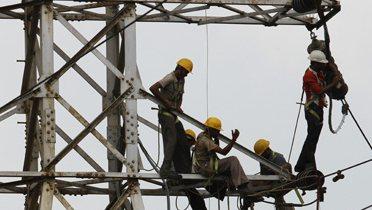Over the past week, I have traveled to New Delhi and Mumbai, attending meetings on South Asian energy issues. While in New Delhi, I participated in the World Energy Policy Summit, a high-level gathering of industry executives, current and former government officials and diplomats, and leading academics. The Summit focused on a wide array of critical domestic and international energy issues. Over the coming days, I will continue on to Bangalore and Chennai to speak with energy officials in those cities.
As part of the same trip, I briefed Indian energy officials, members of the media, academics, and diplomats on critical challenges in the South Asian regional energy situation. These discussions were based on research contained in my new book, Energy and Security in South Asia: Cooperation or Conflict? (Brookings Press, 2011).
After participating in the above conferences, briefings, and conversations, I took away the following conclusions:
- India understands that it faces a profound energy crisis.
The primary theme consistent in each of the conferences and meetings I attended was that India—and the South Asia region as a whole—is facing a profound energy crisis that will require immediate and bold action by the government and private sector. However, a secondary conclusion was that many of these officials were not optimistic in government’s ability to make the requisite reforms on a timely basis. Part of this stems from the recent furor surrounding government corruption, catalyzed by the activist Anna Hazare’s civil protest in New Delhi. In addition, soaring inflation for fuel and food products as well as the global economic recession will prevent any decisive energy reforms.
- The growing need to understand India’s energy realities – oil, gas, and coal will remain the major fuels for India’s future.
In general, energy experts and officials agree that oil, gas, and coal will be the major fuels for India in the coming decades. While the government has bold plans for renewable energy generation—the goal is to have renewable generation comprise 20% of generation capacity by 2020—even government ministers acknowledged that these goals will not be met. This is primarily due to the technical constraints of renewable energy (i.e., intermittency) and the inability of the electricity grid to connect renewable projects to major load centers. Moreover, while renewable industry officials cite the impressive percentage growth of solar and wind power, it is important to note that this will be a small fraction of India’s conventional electricity production, which will also rise—from a larger base—in the coming years. Many government and private sector officials recognize that oil will remain the primary fuel for transportation (owing to the explosive growth in car sales), that coal will continue to be a major source of electricity generation, and that natural gas should no longer be seen as a “bridge” fuel rather as a cornerstone of India’s future energy supply. It was unfortunate that carbon capture and sequestration weren’t a priority of policymakers. Given India’s forecasted dependence on coal and natural gas, the lack of CCS-capable power plants and industrial production facilities will have dire consequences not only for India, but also for global greenhouse gas emissions.
Curbing India’s carbon emissions will also depend on the country’s interest in nuclear energy. While the government has been broadly supportive of nuclear energy—it hopes to have 20 gigawatts of installed nuclear capacity by 2020, up from under 5 gigawatts today—the public debate on nuclear energy is getting increasingly polarized and ideological, particularly in the wake of the Fukushima nuclear accident in Japan. However, nuclear energy is still the only source of large-scale zero-carbon electricity a point that is viewed unfavorably by some policymakers and advocates.
Finally, there seems to be a lack of understanding—that is also present in the United States—that renewable energy cannot replace oil in the fast-growing transportation sector in the near future. While there is a possibility over time that it can displace some backup diesel generation and kerosene heating applications, by-and-large renewables will not displace much oil consumption, which will continue to rise.
- There is a substantial lack of investment in the energy sector.
Another significant impediment to energy security in India is the lack of investment in infrastructure. While globally energy infrastructure investment will be imperative—approximately $33 trillion in total energy infrastructure is needed by 2035—India is particularly devoid of adequate energy infrastructure. Its electricity grid is old and inefficient, with transmission and distribution losses averaging about 34% nationally (a good electricity grid loses about 6%). In fact, if India were to invest heavily in its transmission and distribution infrastructure, this would reduce the requirement for large, costly power plants. Similarly, there is a fundamental lack of gas supply infrastructure. While gas supplies have become more promising in recent years (for both conventional and unconventional gas) the lack of a large gas pipeline network means that gas will have a hard time getting to end-use consumers. India also has tens of gigawatts of captive installed electric capacity—power plants that are underused—because of poor grid connectivity. As a result, businesses, industry, and households all deploy off-grid diesel generators to cover for the deficiency of electricity distribution at large economic and environmental costs. Another impact of the lack of investment is on the efficiency of energy production. National oil and gas companies do not have the technical capacity to develop significant oil and gas resources (without private sector involvement) and large-scale power plants run at low capacity factors because of a lack of maintenance or disruptions in the fuel supply.
- Governments continue to have too much participation in the energy sector.
The Indian government (at both the state and national levels) remains too involved in the energy sector—all the way from production to consumption. Despite modest reforms to some prices (gasoline) and sectors (electricity), there remains too much government red tape by India’s infamous bureaucracy, discouraging much-needed private sector investment. Yet although there is near consensus that this is an unsustainable government policy, many Indian policymakers are steadfast in maintaining the public sector involvement in the energy sector. In fact, a government official in one session suggested a government mandate that private oil and gas companies should invest 10 percent of their profits into renewable energy research and development. This rhetoric indicates how far the government still has to go before it can throw of the vestiges of previous socialist policy. While the government maintains this interest in the energy sector, global prices continue to increase, placing a giant burden on the country’s balance sheet. For example, India’s oil import bill is the largest (in terms of percent of GDP) of any of the G20 nations, and is rising. Concurrently, domestic intervention and failure to invest in infrastructure in the coal sector is limiting domestic production. Therefore, India, which gets nearly 70% of its electricity from coal, is becoming increasingly reliant on more expensive, imported coal—which, in the case of Indonesia, has nearly doubled the price to Indian power producers. Further privatization of the coal sector would yield immense benefits: in 2010, Coal India, India’s national coal company, floated ten percent of its shares on the Indian stock exchange generating nearly $3.5 billion.
On the oil and gas side, the government remains equally, if not overly involved. Historic public sector dominance has prevented the development of Indian oil and gas fields: only 22% of Indian sedimentary basins have been well explored and private sector groups are confident that further resources can be found, if given consistent fiscal and investment policies. Given that the majority of India’s potential reserves are believed to be in the deepwater, private sector investment is vital: government companies do not have the technology, nor the risk-appetite, for such activities.
- Pricing reform is the most critical issue confronting India’s energy security.
The continuation of subsidized prices for energy products (petroleum products, natural gas, and electricity) is costing the government tens of billions of dollars, placing strains on the national budget and reducing resources for other vital social priorities such as education, health care, and infrastructure. It is also discouraging both energy conservation and private investment in new energy production and ancillary infrastructure—since the private sector cannot recover investment costs. The government has made adjustments to the cost of some energy products: in June 2010, the price of gasoline was deregulated (gasoline prices in India are now higher than those in the United States), and natural gas prices for industrial consumption and petrochemical production have been increased. However, these are only modest reforms. Gasoline is predominantly used by wealthy consumers—most Indians use diesel for transportation. Diesel, liquid petroleum gas (used by wealthy consumers for cooking), and kerosene (used by poorer consumers for cooking, heating, and lighting) are all still subsidized. Natural gas remains subsidized for power generation and fertilizer production, both of which account for the overwhelming majority of natural gas consumption. Electricity generation is also heavily subsidized for residential consumers and farmers. Not only does this cause large inefficiencies in electricity consumption, but it also having an impact on India’s competitiveness. Industry pays high electricity tariffs to compensate for the subsidies to residential consumers, resulting in high operational costs to India’s industrial players. In fact, many are resorting to building isolated power plants for in-house use, to eschew relying on high domestic tariffs. Worse still, many companies are finding India increasingly expensive to operate in, and are considering moving plants elsewhere.
- Land access and compensation.
One of the major debates raging in India at the moment is over the issue of land titles, rights, and compensation. The origin of many of India’s land titles dates back prior to its independence. Therefore when large energy producers, electricity generators, or other industrial houses attempt to build facilities or transmission and distribution networks, they often don’t know who to pay (who owns the land), what laws to abide by (local, state, or federal laws), and how much to pay (land appraisals and compensation are murky at best). Worse still, when building a pipeline or distribution lines that cross states, a company often has to compensate hundreds of different villages for land access, requiring a devastating amount of time for project coordination. This issue is particularly vitriolic right now, as industry, political, and environmental interests collide.
India stands at a crossroads in its national economic development. While it has proven over the past decade to be one of the fastest growing economies in the world, the looming energy crisis can derail its economic achievements if the aforementioned issues are not addressed with aplomb.




